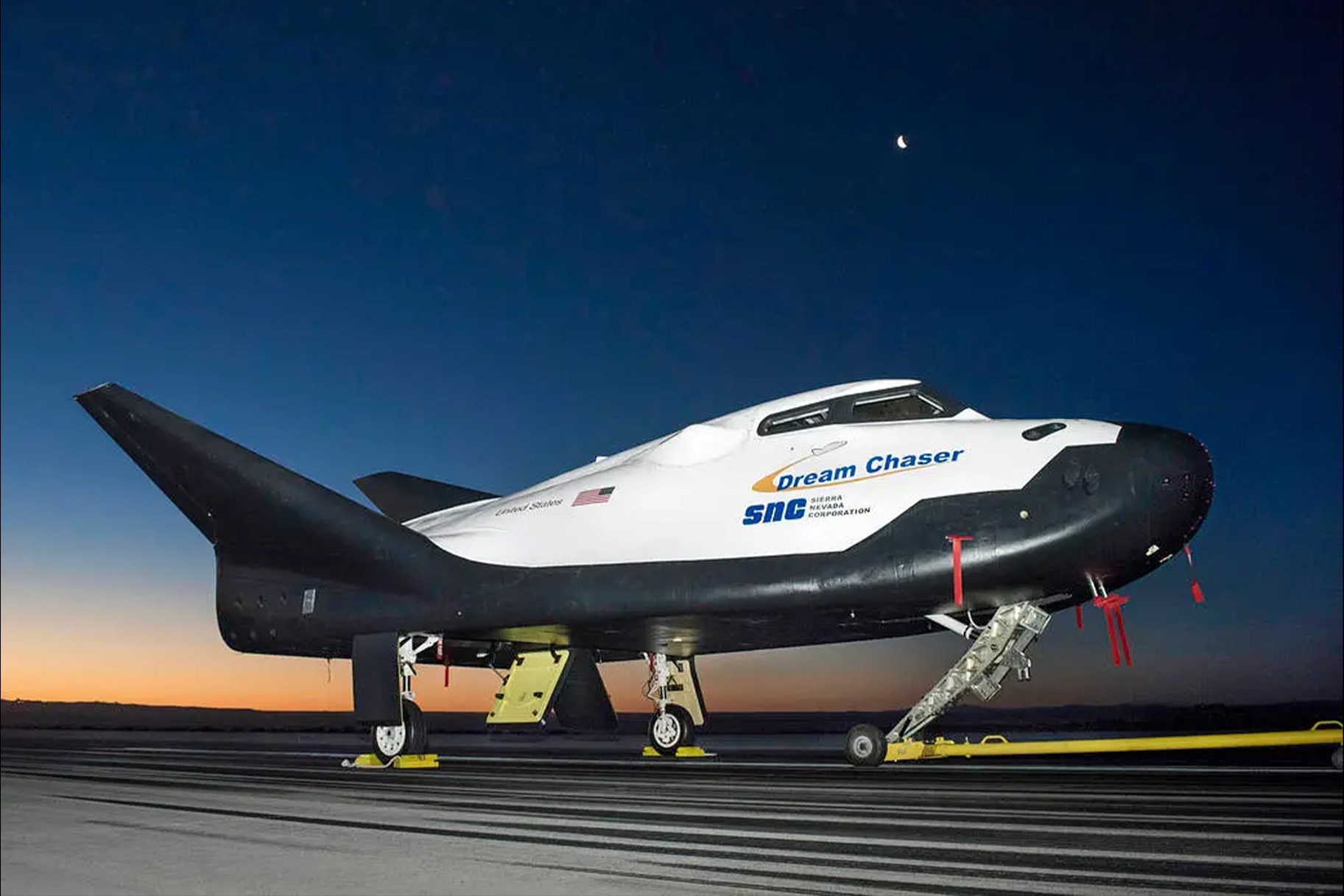Create a free profile to get unlimited access to exclusive videos, sweepstakes, and more!
Dream Chaser Space Plane Prepares for First Flight to ISS
Sierra Space's Dream Chaser space plane is ready to fly to the International Space Station.

The fictional Farscape-1 was an experimental winged spacecraft piloted by John Crichton in the sci-fi series Farscape. It was designed to use Earth’s gravitational influence to slingshot itself into space at incredible speeds. Unfortunately for Crichton (but fortunately for the viewers at home), he made a wrong turn somewhere and fell into a wormhole headed for the other side of the galaxy. Soon, a real-world experimental space plane, the Dream Chaser from Sierra Space, will blast off on its first trip to the International Space Station (ISS).
Dream Chaser Arrives at KSP Before its First Flight to the ISS
To date, if you wanted to see the Dream Chaser space plane in action, you needed to go to NASA’s Neil Armstrong Test Facility in Ohio, but no longer. It recently arrived at the Kennedy Space Center in Florida, in advance of its first trip to the ISS.
For More on Spaceships:
NASA's Next-Gen Spacecraft Test Will Soar Through Space with an 800-Square-Foot Solar Sail
Watch this Space Probe Experience Fiery Reentry in High-Definition Video
NASA Just Got a Shipment of Plutonium for Next Class of Nuclear-Powered Spaceships
The plane, dubbed Tenacity, will launch atop a Vulcan rocket carrying 7,800 pounds of food, water, and other supplies to the station as part of NASA’s Commercial Resupply Services. This test flight will certify Dream Chaser for future space operations, meaning Sierra Space could continue resupplying the ISS until it is retired in 2030. After that, the company might be ready to supply its own stations. Sierra Space recently made headlines for intentionally exploding one of their inflatable space station modules to test its resistance to internal pressure.
Each Dream Chaser space plane is designed to be reused up to 15 times, while its Shooting Star cargo module is single use, designed to be discarded. It launches with wings folded and deploys them once in orbit, revealing solar panels which help to power the plane during its autonomous approach to the station. It will kick the tires, testing systems and performance before getting docking. Those tests include successfully communicating with the ISS and obeying its commands, including holding its approach and retreating when told. Just before docking, it will stop just 38 feet from the station and wait for the Canadarm2 robotic arm to grab hold of a fixture on the cargo module.
Future flights could carry up to 11,500 pounds of cargo, bring up to 3,500 pounds of cargo back to Earth, and be ready to launch in as little as 24 hours. After docking with the station, it will hang around for 45 days before being cut loose. Then it will wait for an opportunity to come home, when the weather and landing conditions are right. The onboard computers will commit to a reentry path and the space plane will glide to a landing on a runway back at the Launch and Landing Facility at Kennedy Space Center. Of course, that’s assuming everything goes according to plan.
Catch Farscape, the complete series, streaming now on Peacock.



























